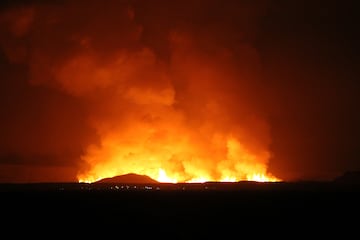ARCHAEOLOGY
The incredible place ancient humans hid for over 7,000 years
A new archaeological study on underground passageways in Saudi Arabia has shed new light on ancient human activity.

An archaeological study has concluded that ancient humans hid in a lava tube in Saudi Arabia for over 7,000 years.
What are lava tubes?
Lava tubes are underground passageways, also known as pyroducts, that are created by lava flows following a volcanic eruption. When the lava tube is active, lava flows along its floor at temperatures of around 2,000º F (1090º C). When it empties, it leaves behind a cave.
Although it was known that Northern Arabia had played an important role in the evolution and cultural development of ancient humans, the poor preservation of organic remains and the desert-like conditions in the region meant it had been difficult to establish any kind of timeline.
That has changed in recent times, however, as archaeologists have begun studying more sheltered underground areas.

The latest study focused on a lava tube named Umm Jirsan, which is in the volcanic field of Harrat Khaybar in Saudi Arabia, around 125 kilometres north of Medina, the country’s fourth biggest city, in the west.
What was found in the Saudi Arabia lava tube?
Researchers discovered artefacts, rock art and skeletal remains which proved there had been regular human occupation for at least 7,000 years. They also believe the rock art and bones found hints at the pyroduct possibly being a popular herding spot for pastoralists.
The remains suggest the livestock fed mainly on wild grasses and shrubs, with humans eating a diet which was rich in protein and included cereals and fruits.
Dr Mathew Stewart, one of the study’s co-authors, revealed the belief humans didn’t inhabit the lava tube permanently but instead used it as a stopping point as they moved from one oasis settlement to another: “This site likely served as a crucial waypoint along pastoral routes, linking key oases and facilitating cultural exchange and trade.”






